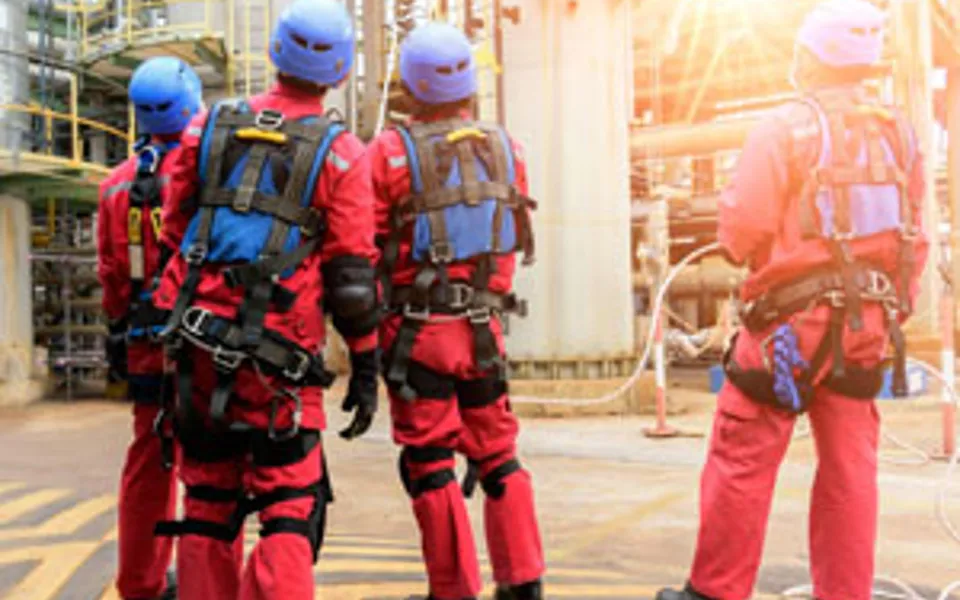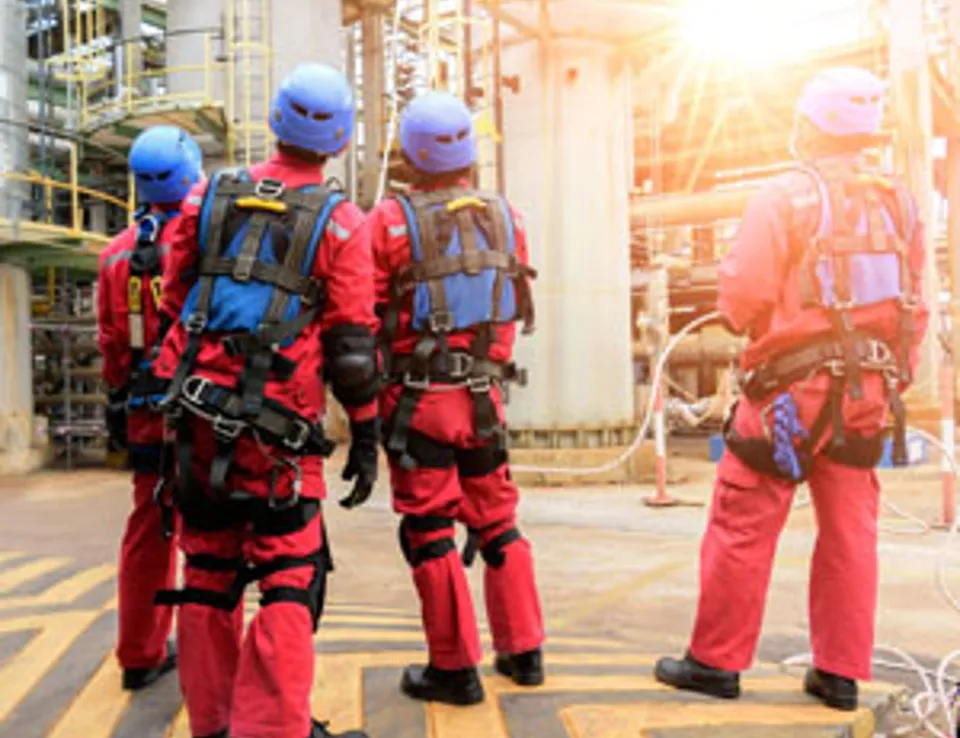
Developing non-technical skills in emergency response
21 Feb 2022
Training for emergency responders, specifically technical training, is centred around ensuring responders in the public and private sectors are safe, effective, competent and confident in their response to incidents. But what about the skills that aren’t ‘technical’?
After reviewing training requirements of more than 800 learners, Ricardo's chemical emergency response experts have found that there is still a lack of focus on developing and practising non-technical skills, which can fundamentally affect the management and outcome of an incident. Dorset and Wiltshire Fire and Rescue Service has already identified the benefits of such training and included it in its training programme.
Non-technical skills can be defined as ‘the cognitive and social skills that complement a workers’ technical skills and, as such, contribute to safe and efficient task performance’1 and can be developed to complement an emergency responder's everyday skill set. These skills are:
- Situational awareness
- Communication
- Decision making
- Leadership
- Stress and pressure
- Teamwork
Did you know?
Non-technical skills were first recognised in the late 1970s and early 1980s following a series of major incidents in the aviation industry.
The issues faced by the aviation industry coincided with NASA developing the Shuttle programme. NASA, spending billions, wanted to bottom out the cause of aviation disasters. The research identified that the ‘Human in the Loop’ was the weak point and five key areas were identified – situational awareness, communication, decision making, leadership, stress and pressure. Since then, the ability to work as part of a team has been identified as an additional non-technical skill.
How can non-technical skills be transferred to the world of emergency response?
When reflecting on case studies of incidents where responders have been killed or seriously injured, there is usually an element of human error involved. To reduce the chance of this, emergency responders need to develop their non-technical skills.
Situational awareness
The three stages of situational awareness are:
- The ability to know what is going on around you by gathering information.
- Making sense of this information.
- Anticipating what could happen next.
Emergency responders need to be able to demonstrate strong situational awareness in all three stages to fully understand the implications of acting on information received. They also need to consider that everyone perceives information differently based on the context and their own subconscious bias and experiences. The danger with situational awareness is that it can be affected by several components, which include lack of awareness in training, human limitations, stress, fatigue and bias. Emergency responders need to be trained to recognise these components to have a better chance of making the right decision.
It can be difficult for emergency responders to develop situational awareness while dealing with low-frequency incidents, such as those involving hazardous materials, which are known to be high risk. There is little that can be done about the level of risk. However, by increasing the frequency of high-quality training, emergency responders can develop mental models to refer to during high-pressure response situations.
Communication
Communication is vitally important when responding to incidents. It must be of a suitable style and frequency for each situation. When reviewing lessons learned or case studies of incidents, communication is highlighted, but is usually focused on the technical aspects. Factors that are technical by their nature could include battery failings, radio dead spots or an individual failing to select the appropriate radio channel – but should there be more focus on communicating effectively during an incident? For maximum effectiveness, non-technical skills training should develop an emergency responders ability to communicate effectively in a style suitable for the stakeholder and at an appropriate frequency.
The following should be considered:
- Do you communicate effectively in 360 degrees?
- Do you consider the required frequency and most effective style of communications for each stakeholder?
- Do you communicate well under pressure?
If the answer to any of the above is no or if you’re unsure, then you need to review your communication skill set.
Decision making
This is defined as the process of reaching a judgement or making the choice between options, perhaps better understood as a course of action to deal with the incident. In a pressured situation, the cognitive capacity of even the most resilient responders can become overloaded and compromised. Cognitive capacity can be affected by:
- Too much information
- Habit
- Biases
- Health
- Groupthink
- Distractions
- Levels of experience
- Emotions
- Pressure
Applying learnt controls and tools is necessary to enable the decision maker to reach a successful outcome when dealing with incidents.
Leadership
When leading a response team, emergency responders need to reflect on how their leadership style in an emergency is interdependent on their leadership style in a non-emergency situation. At any incident, the lead responder must enable and empower emergency responders to approach them with new information. The leadership style before the emergency sets the tone of how team members react during the emergency.
Leaders must have the ability to be flexible in their leadership style in response to dynamic situations, taking on a more directive style when managing incidents and being more consultative in times of less risk.
Stress and pressure
There are many different factors to be considered regarding an individual’s ability to work in a stressful environment. Through self-awareness, training, utilising stress reduction techniques, being physically fit and being able to ask for support, responders can reduce the risk of negative impact from stress. When dealing with dynamic incidents, responders can manage the associated stress in the preparation phase2 by carrying out relevant training, which can assist them in becoming more familiar with that incident type.
Teamwork
When developing teamwork skills, responders must be mindful that they won’t always be part of the same team. They must reflect on how they are perceived by and respond to other team members, how they behave within a team and the impact of their behaviour. Within every highly effective team, there is a culture in which feedback is routinely given and accepted.
How do you ensure non-technical skills are developed and practised?
It is necessary to continue to train and test technical skills to enable responders to be safe, effective, competent and confident. Non-technical and technical skills training can occur simultaneously to assist with the time constraints placed upon response teams and organisations.
It is recommended that if training leads want to reduce the risk of human error and improve the safety of responders, they should look to integrate non-technical skills into training programmes at the earliest opportunity. Responders should continue to develop and practice these skills regularly.
With thanks to co-author Station Manager Antony Bholah – Dorset & Wiltshire Fire and Rescue Service
References:
1. Flin, Rhona & O Connor, Paul & Crichton, Margaret. (2013). Safety at the Sharp End: A Guide to Non-technical Skills. Safety at the Sharp End: A Guide to Non-Technical Skills. CRC Press, 1-317.
2. Civil Contingencies Act Enhancement Programme (phase four of the six phases of integrated emergency management).




 Follow Ricardo Chemical Solutions for regular updates
Follow Ricardo Chemical Solutions for regular updates





